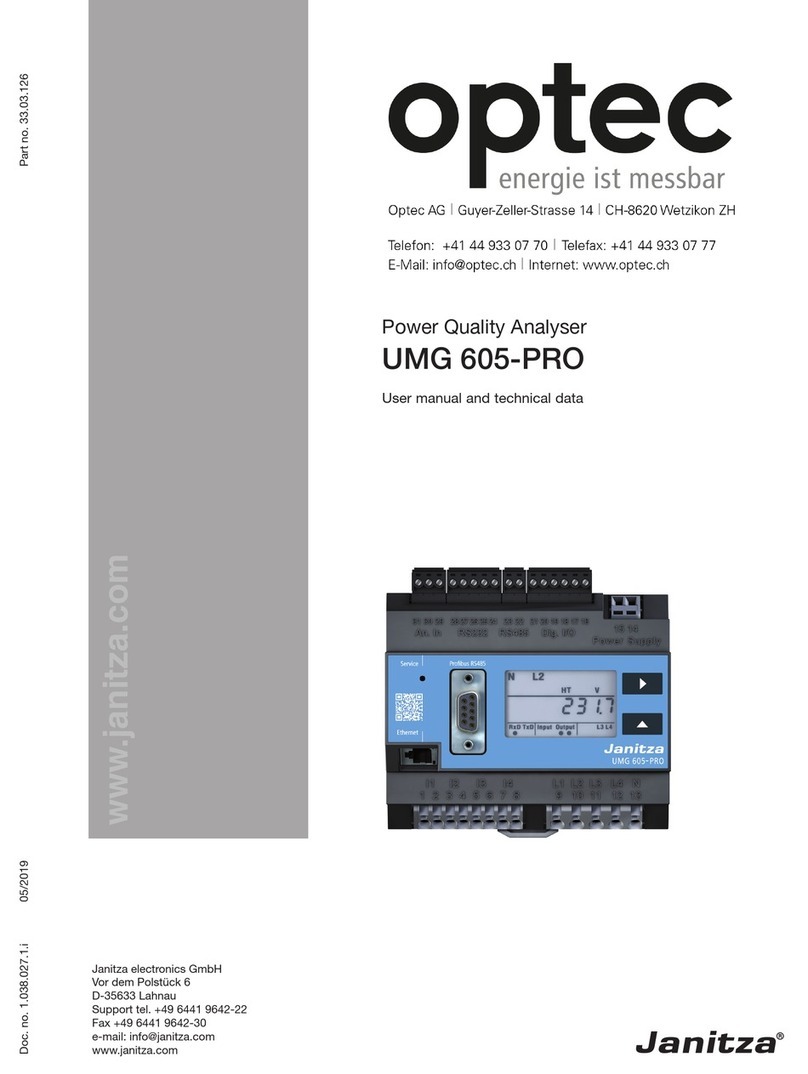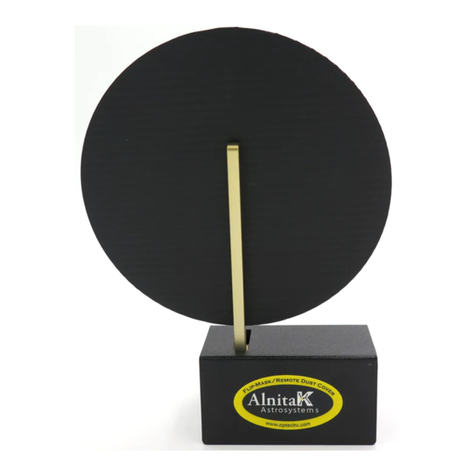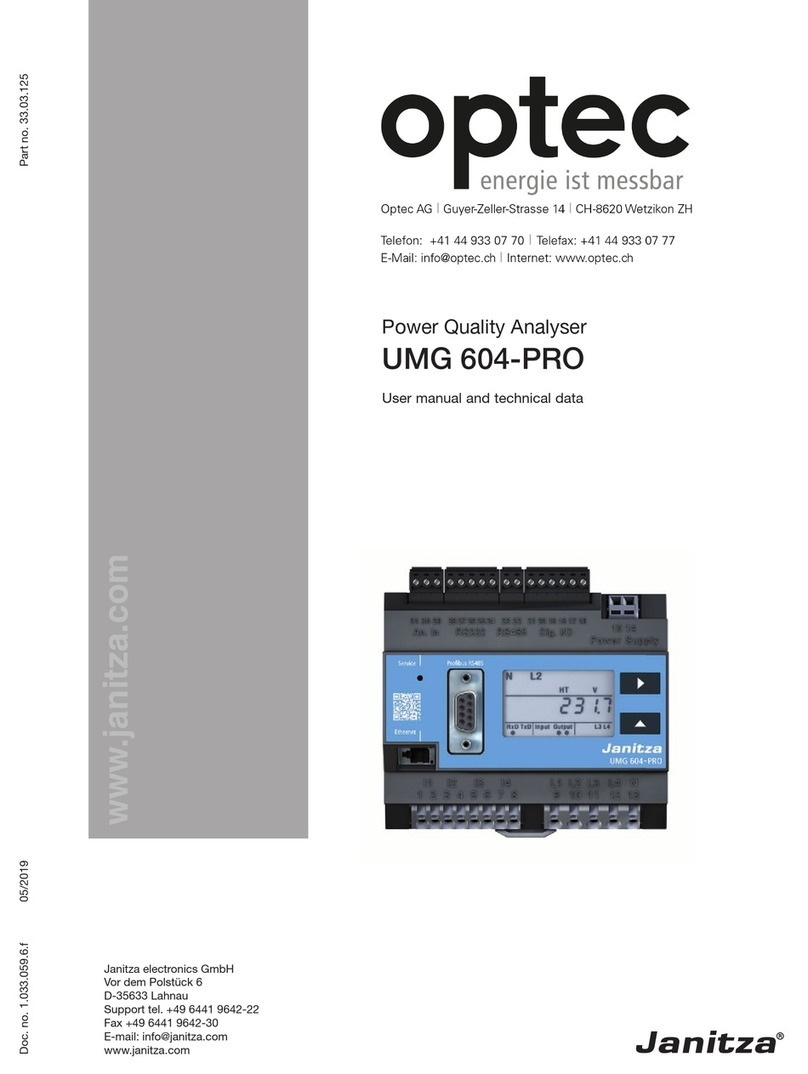
4
2.2 DETECTOR - PMT OPTIONS
Optec currently offers two different models of side-on photomultiplier tubes (PMT's) which can
be used in the SSP-5. These PMT's are manufactured by Hamamatsu Corporation and measure
only 40 mm long by 14 mm in diameter. In this small package is a well designed 9-stage
photomultiplier which can operate at -1000 VDC. At the operating voltage of -850 VDC and
after several hours of warm-up, the model R4040 PMT has a typical measured dark current of
around 8 pA at 70° F ambient temperature.
The model R4457 is an extended red response PMT which can allow measurements into the
Johnson R band. The overall gain and quantum efficiency (QE) of the R4457 is much better than
the R4040. The QE at the center of the Johnson V band, 540 nm, is approximately 2% for the
R4040 and 16% for the R4457. Because of this increased sensitivity, when the R4457 PMT is
specified the operating supply voltage is set to -750 VDC rather than -850 VDC. At this voltage,
the measured dark current is typically less than 2 pA at 70° ambient temperature.
The spectral response of the R4040 is S-5 which is identical to the S-4 response of the traditional
1P21 tube except for extended response in the UV. This extended response to about 185 nm is
due to the special UV transmitting glass used for the tube. The spectral response of the R4457
extends from the same 185 nm at the blue end to 830 nm at the red end. A Fabry lens of B270
glass and 2.9 mm center thickness cuts the transmission to 50% at 315 nm and to 0 at 300 nm.
This small loss of UV transmission near 300 nm should not adversely affect the U filter
transformation to the standard system.
The R4040 tube is powered by an -850 VDC power supply to give a current amplification of
about 1x106. This value was chosen after measuring the signal to dark-noise ratio at several
applied voltages and using the voltage giving the highest value. Once set, the operating voltage
cannot be changed by the user. When the R4457 PMT is specified, the voltage is turned down to
-750 VDC. This lower voltage setting is needed to allow the user to observe brighter stars
(brighter than 4th magnitude) without saturating the detector. The current amplification of the
R4457 at -750 VDC is about 6x105
A mu-metal shield of high permeability is placed around the PMT to reduce the effect of external
magnetic fields (dome motors, the earth's field, conductors inside the SSP-5, etc.) on the path of
photoelectrons in the tube. See Figure 2-1. In addition the shield is brought to the same potential
as the photocathode, so that photoelectrons are not drawn to the glass tube. To protect against
shock hazard, the shield is connected to the high voltage supply through a 22 M ohm current
limiting resistor.
As discussed by Miles1(1986) the dark current of a PMT is decreased substantially by
dehumidifying the tube in a desiccating chamber. This apparently reduces current leakage around
the tube pins and socket connectors to a minimum. Before assembly, the tube and socket used in
the SSP-5 are placed in a vacuum desiccator for several days before they are installed into the
SSP-5. To insure continued dry operating conditions, a rechargeable silica gel canister is used as
an access cover on the side of the unit. The silica gel pellets are dark blue when activated and
turn pale pink when its drying ability is diminished. At that time, the silica gel canister/cover can






























